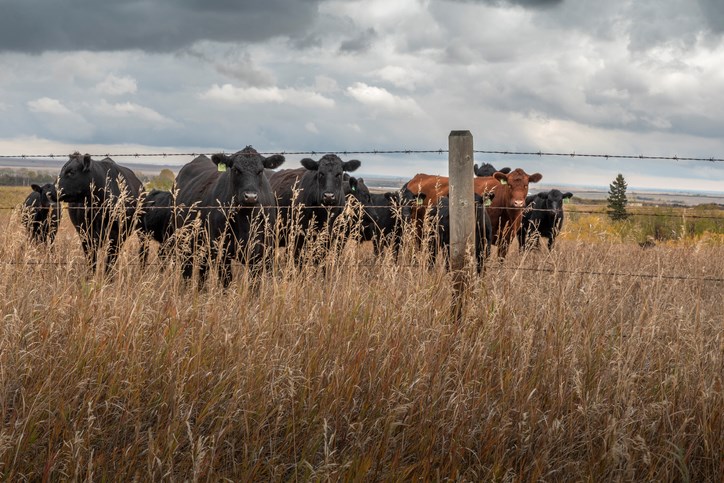Ranchers in Alberta and Saskatchewan are cobbling together feed as the summer draws to an end and the fall run gets underway.
But whether AgriRecovery funds that are expected to start flowing in earnest this month will be able to stem a large dispersal of cattle inventories has yet to be seen.
“Is $94 going to save the herd? No,” said Alberta Beef Producers chair Melanie Wowk, referring to the province’s initial AgriRecovery assistance payment. “But really what our thinking with this is it will at least give producers some money to give them some breathing room and they can see what’s going to happen into the winter.”
Between Aug. 31 and Sept. 7, Manitoba, Saskatchewan, British Columbia and Alberta all rolled out their provincial programs under the AgriRecovery framework with various names and some minor differences, but all with the same goal of helping ranchers find feed and assist with expenses related to this year’s drought.
The jostling between provincial and federal governments as to how much each was willing to put up for the jointly funded program — split 60-40 with Ottawa picking up the larger share — began in late July.
In a statement from federal Agriculture Minister Marie-Claude Bibeau on the eve of the federal election call, Ottawa matched provincial contributions up to $500 million.
The money will help but finding feed continues to be a challenge, said Wowk, adding an additional $106 will be available to Alberta producers later in the year through a receipt-based payment.
Like many ranchers dealing with the drought, Wowk said she is tapping local resources to find feed around her Two Hills, Alta., operation.
“We’re able to obtain some pea straw, wheat straw and some oat straw from some of our neighbours here that are combining,” she said. “We’ve also secured a little bit of barley from a neighbour that we were able to just pull right off the field for him so he didn’t have to haul it anywhere — extremely expensive.”
Saskatchewan’s program, like Alberta’s, will split a $200 payment in two with ranchers now eligible for an initial $100 per breeding female and a second equal payment for cows still retained at the end of the year. Unlike Alberta, the second payment won’t require receipts.
Saskatchewan Cattlemen’s Association chief executive officer Ryder Lee said his province’s program alleviates some stress but the full weight of this year’s drought won’t be lifted by the assistance.
“SCA’s ask was $400 a head,” said Lee, adding that’s his organization’s calculation of additional costs associated with this year’s drought.
“We’re grateful for the help that’s come but recognize we’re still going to be reducing our herd to match our feed supply.”
Saskatchewan’s ranchers are also getting creative in placing their cows to give them a fighting chance but are running into situations where they might be able to find a pasture but with no water or vice-versa, said Lee.
Alberta’s NDP agriculture critic, Heather Sweet, said her province could have done better in managing its assistance program.
“It’s a little too late and a little too short,” said Sweet of the UCP government’s response. “They should have given the ranchers the full $200 today so they can keep their herds whole.”
She also asked why the full payment wasn’t made from the outset to ranchers.
“It’s almost as if they don’t trust that they are going to spend the money to keep their herds whole,” said Sweet.
For now, there are some good signs on the horizon because cattle prices have yet to dip, said Wowk.
“Six and seven hundredweight calves are looking pretty good for November delivery,” she said. “We sold ours for November delivery about a month ago and we got about the same as we got last year and I’ve seen that they’ve climbed a little bit.”
But Lee said there will still be a need to get some moisture in the coming months for beef producers to be able to get through this year and be set up for a better 2022.
“We’ve got a lot of recharging to do — water tables and soil moisture and sub-soil moisture,” said Lee. “To me, every day that we are not getting a nice rain, we’re not getting better.”
Without that, Lee said ranchers will be left with the unfortunate irony of hoping for both a snowy winter with lots of runoff to help moisture levels, and an open winter to provide forage opportunities because of a lack of feed.

